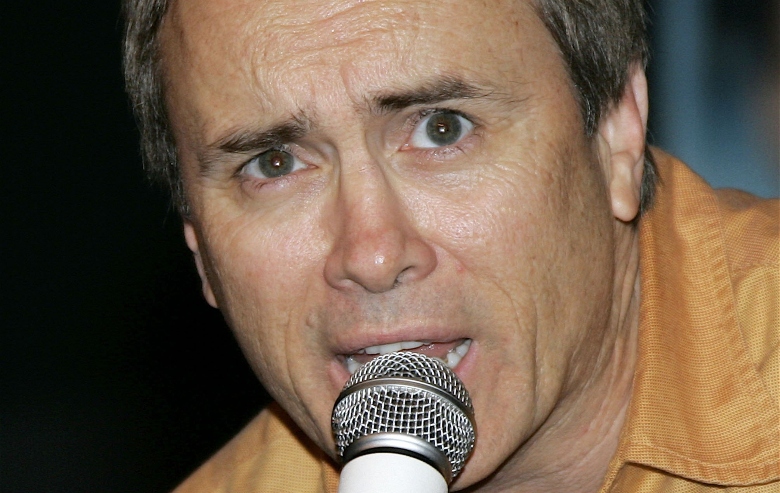
David Livingston/Getty Images Jeffrey Combs appears on stage at Grand Slam XIV: The Sci-Fi Summit on March 11, 2006 in Pasadena, California.
Veteran Star Trek actor Jeffrey Combs is used to playing the villain. Most of the one-off characters he played in the Trek-verse were antagonists, or at the very least, shady. All three of his major Star Trek characters — Weyoun, Shran, and Brunt — were villains for at least part of their character arcs. Based on the fact that the producers kept asking him back for these wicked roles, it’s clear that Combs has a talent for playing bad boys.
However, Combs doesn’t view any of his characters, particularly Weyoun, as the villains of the story. During a GalaxyCon virtual panel on Saturday, Combs explained why he doesn’t “play villains.”
It’s All a Matter of Perspective
Saturday’s panel was all about Star Trek villains. Combs was joined by fellow Star Trek veterans Casey Biggs, Steve Rankin, and Vaughn Armstrong, all of whom are known for their villainous roles.
When a fan asked, “What is the best part of playing a villain?” Combs immediately responded, “I don’t play villains.”
He explained that whether a character is a villain or a hero depends on the perspective of the person analyzing their actions.
“They’re characters that have a different objective. You may not agree with it. But they’ve rationalized that it’s the most necessary thing they have to do. Maybe they take a little relish in some of their naughtier moments, but most of the time it’s just the opposite viewpoint.”
Biggs, who played the character Gul Damar in Star Trek: Deep Space Nine, agreed, saying, “You’re always doing something you believe in, whether it’s wrong or right.”
Combs went on to say that playing the “snarling bad guy,” the character that’s all bad through and through, isn’t good acting. The portrayal is “too one-dimensional.” To create characters that people connect with, actors need to bring more than just all-out evil to their characters. Combs stressed the importance of finding the “reason” for the character’s actions and conveying that reason to the audience.
He then gave an interesting example about how much perspective matters when it comes to who’s a villain and who’s not. Combs explained that Damar was a villain turned good from the perspective of the main characters on DS9. However, from Weyoun’s point of view, Damar “turned evil” because he betrayed the Dominion.
The other actors on the panel agreed with Combs that the villains aren’t the villains of their own stories. In their own stories, they’re the heroes, or at the very least, doing what they have to do to survive.
‘Star Trek’s’ Villains Drive the Stories
Rankin, whose most memorable Star Trek villain was Colonel Green in Star Trek: Enterprise, added that he loved playing the villains because the story focused entirely on them.
“They have something very interesting to do. When they write the scripts, we’re always up to something… That’s what makes it very interesting, to get inside them and figure out what to do.”
He continued, saying that the “regulars” on the show are always focusing on what the bad guy of the week is up to. So, in a way, the entire episode actually revolves around the villain, not the heroes.
Vaughn, whose most memorable Star Trek villain was the Cardassian bad guy turned good guy Seskal, agreed. He said, “You’re the story! That’s always fun.”
All four of the actors said that playing the villains was often more interesting than playing the hero, which is probably why they were all such good villains.
READ NEXT: All the ‘Star Trek’ Characters Played by Vaughn Armstrong